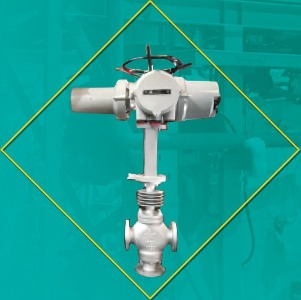In 2017, DERVOS contributed to an innovative environmental initiative led by ECOFUEL, an emerging canadian player in clean technology. This groundbreaking project aimed to produce sustainable diesel from solid waste, setting a precedent in green energy solutions. DERVOS is proud to have provided 136 sets of premium valves to support this pioneering effort.

DERVOS’s Contribution
DERVOS supplied a diverse range of high performance valves, including:
Segment Ball Control Valves: Renowned for their exceptional regulating performance, these V-type ball valves deliver precise control and are particularly suited for media containing fibers, solid particles, and slurry. The unique design featuring a V-shaped slit and metal seat enhances both cut-off and flow regulation capabilities.
Knife Gate Valves: Ideal for handling mediums with wooden debris and slurry, these valves offer excellent cut-down performance, ensuring reliable operation in challenging conditions.

Three-Way Split Flow Valves: Remotely controlled by electric actuators, these valves enable the flow to be split into two streams, providing precise control over process parameters.
Safety Valves: Customized to meet API 520 and API 526 standards, these valves are tailored to the project’s specific pressure, temperature, and flow capacity requirements, delivering optimal over-pressure protection.
Why DERVOS VALVE?
Our team’s expertise in valve selection and customization ensured seamless integration of our products into ECOFUEL’s processes. From gate valves to safety valves, DERVOS’s comprehensive product range met the diverse demands.
A Step Towards a Sustainable Future
DERVOS, as a leading valve manufacturer, is proud to support the ECOFUEL Innovation Project, demonstrating our commitment to global environmental protection. By delivering reliable flow control solutions, we help industries adopt cleaner, more sustainable technologies.
If you are interested in our products and want to know more details,please leave a message here,we will reply you as soon as we can.